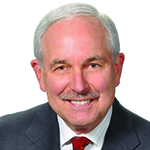HISTORICAL ROW: TIME FOR A BREAK!
 When you spend your life in a university community, the academic calendar can seem as inevitable as the change of seasons in New England. The new year starts in September, close to Labor Day. Frosh show up early for orientation. Semesters are about 13 weeks long, with a short break in the midst of the fall semester and a longer one in the spring. Between the two semesters is a long winter break. After spring, comes summer vacation. And then you start all over again.
When you spend your life in a university community, the academic calendar can seem as inevitable as the change of seasons in New England. The new year starts in September, close to Labor Day. Frosh show up early for orientation. Semesters are about 13 weeks long, with a short break in the midst of the fall semester and a longer one in the spring. Between the two semesters is a long winter break. After spring, comes summer vacation. And then you start all over again.
Of course it hasn’t always been so. In 1831, Wesleyan’s first year of operation, the academic year was divided into two semesters, as it is now. The fall semester commenced on the third Wednesday in August and exams were held before Christmas. So far, it sounds pretty familiar. But a seven-week vacation followed those final exams, and the spring semester began on the next Wednesday, which would have been in early February. Classes ended in mid-July, there was a summer vacation of five weeks, and the new academic year began the next August. There were no breaks during either the fall or the spring semesters. Naturally, this simple schedule didn’t last long.
By the time the calendar for the academic year 1832–33 was printed, the Board of Trustees and Visitors had already voted to change it. Effective beginning the fall of 1833, the academic year was divided into three terms, with two-week breaks between the first two, and a six-week summer vacation. The three-term system was in place until 1837–38, when Wesleyan went back to two semesters, with a substantial break at Christmastime and another in the summer. With a few short periods of exception based on external exigencies, the two-semester system has remained the norm for the ensuing 170 years.
Nor surprisingly, one of those periods of exigency was during World War II. After the United States fully committed to the war in the wake of Pearl Harbor, many students were eager to enlist and, of course, many were drafted. In order to put them on a fast track to graduation, Wesleyan changed the calendar dramatically. A summer session was held jointly with Trinity in 1941–42. During the war years, Wesleyan held three terms—and three commencements—each year until 1947–48, when the two-semester plan was reinstituted.
Many Wesleyan alumni remember the era when the Christmas break interrupted the first semester, and final exams were held in January. In 1971, the year the calendar changed, there were two sets of winter exams. In mid-January 1971, students took exams at the end of the first semester of the 1970–71 academic year. In December 1971, they ended the fall semester of 1971–72 with another round of exams. Since that time, the winter exams have been scheduled conveniently before the holidays.
In early times, examination days could seem endless. In 1839, for instance, exams began at 5:30 a.m. and ended at 6 p.m. Stamina was clearly as important as effective studying! Today’s exam days are just as long, although, with the variety of classes in students’ schedules, it is unlikely that anyone would have several solid days of examinations. The difference is in the scheduling: students are not up at 5:30 unless they’re still awake from the night before. The evening exam schedule, which can run as late as 10 p.m., was put in place in the 1990s.
In some periods, there have been experiments with academic programs during the long winter and summer breaks. The Graduate Liberal Studies Program, far from an experiment more than half a century later, began as a summer-only program in 1953. (See “Summer School Closed Due to Snow!?” in the spring 2003 issue of Wesleyan.) As early as 1902, Wesleyan held a summer school of chemistry and biology, aimed at home economics teachers and led by Prof. Wilbur Olin Atwater. Numerous other academic programs have flourished in summers since then. Winter breaks in the early 1970s were a time for short, intensive courses outside the standard curriculum. Initially known as “January term,” and later as “Intersession,” the winter break curriculum lasted only a few years until it was cut short by prohibitive costs during the energy crisis of the mid-1970s.
—Suzy Taraba ’77, University Archivist
The Wesleyan University Archives welcomes researchers interested in the intricacies of the academic calendar or any aspect of life at Wesleyan. We would be glad to provide a home for your memories of your student years.

